
Indonesian Teachers Complete the Training Phase of the Ethics Education Fellowship Program

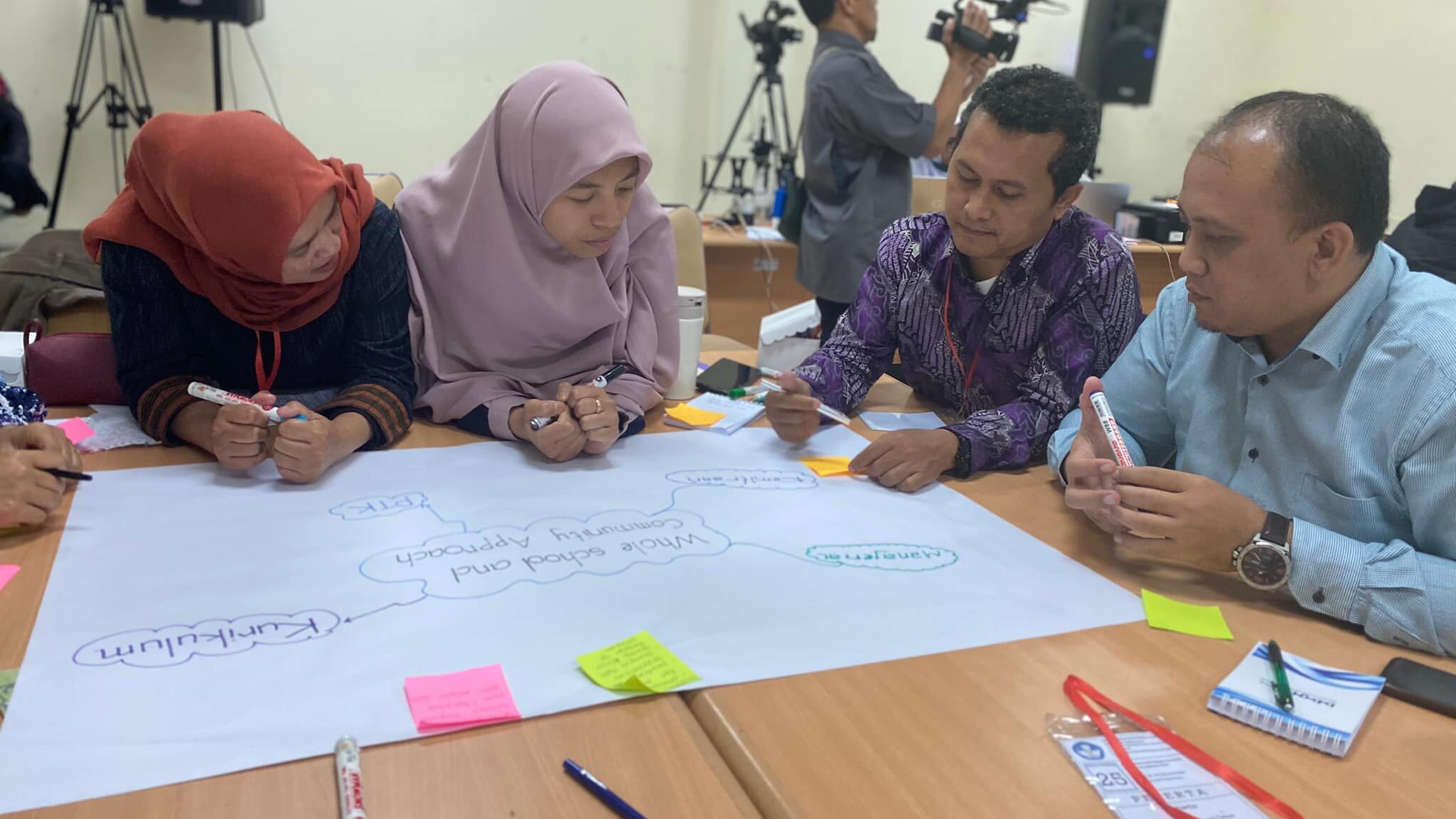
The training workshops for teachers under the Ethics Education Fellowship, concluded successfully in Indonesia, reaching 200 participants from five regions. The teachers received specialized training through engaging activities, equipping them with the necessary skills and knowledge to implement ethics education programs in their local schools. It is estimated that these teachers will reach 1,500 students by the end of 2023.
A Collaborative and Multistakeholder Journey
Designed to strengthen the sustainable delivery of ethics education programs for children, the Fellowship invites teachers to prepare and facilitate a learning journey for children. This approach helps learners to develop positive relationships with themselves and others, engage in ethical reflection and dialogue, enhance their ability to learn to live together and develop collective actions to make positive impacts in their communities.
The Ethics Education Fellowship is being carried out simultaneously and collaboratively in Bangladesh, Indonesia, Kenya, Mauritius, Nepal, and Seychelles. The program operates on a fellowship structure, where dedicated representatives from each country play a key role. These fellows lead the national efforts by organizing training workshops for teachers, ensuring the successful implementation of ethics education programs with children, and advocating for the importance of ethics education on a national scale. Furthermore, the fellows have established a Global Community of Practice to learn from each other, collaborate and support the expansion of the program.
This program is a collaborative effort involving Arigatou International, the Guerrand-Hermès Foundation for Peace, the KAICIID International Dialogue Centre, the Muslim Council of Elders, and UNESCO, which is represented by the UNESCO Regional Office for Eastern Africa and the UNESCO New Delhi Cluster Office. The process is supported by the National Commissions for UNESCO of Indonesia and Kenya. The program is being led in each country by the ministries of education, through the fellows, a group of educators and ministry officers, that were trained as teacher trainers back in October 2022.
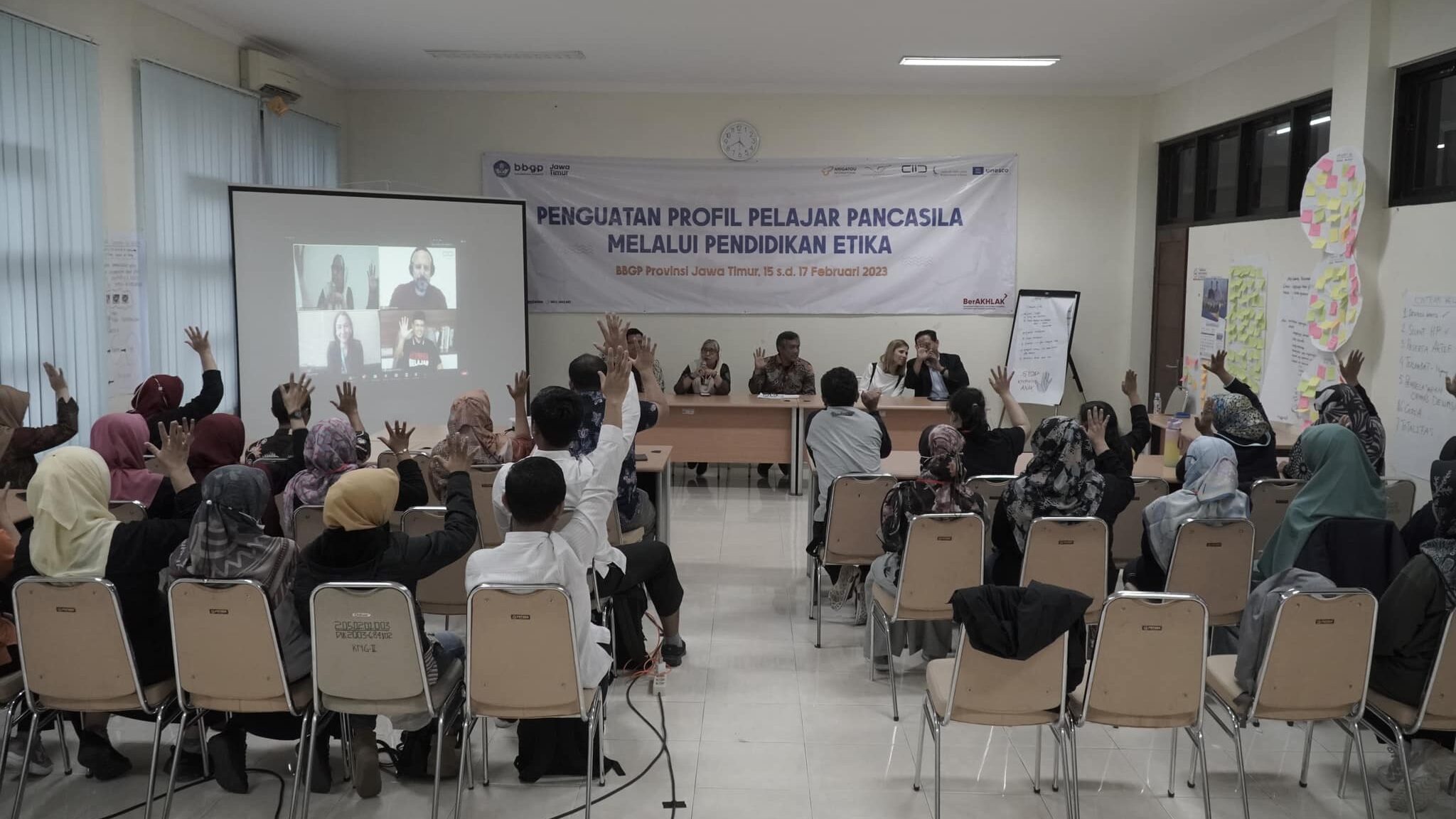
Empowering Teachers through Training in Indonesia
The training program for Indonesian teachers consisted of two phases. The first phase, a hybrid workshop held in Suravaya in February 2023, brought together 67 participants from various regions. Over three days, participants had the opportunity to share their experiences, discuss critical issues affecting learners, and explore the role of education in addressing these challenges. Key topics included discrimination, stereotypes, violence, and their impact on children’s lives in schools.
Participants explored the Ethics Education Conceptual Framework which is built around three pillars: Relationships, Ethical Reflection and Dialogue, and Collective Action. They reflected on what ethics means in their lives and their interactions with others, and on the ethical challenges they, the children and their communities face. While doing it, participants identified how ethics education programs can foster transformation in children by encouraging ethical reflections and engaging them in dialogue with others.
“The workshop provided extraordinary benefits to me personally. Now I better understand how an educator should be a role model for students, especially in the classroom,” said one of the teachers, while highlighting the importance of learning to respect each other, and accept our differences.
Teachers explored the alignment between the transformative pedagogy approach and the Pancasila principles of the Indonesian Constitution. They also recognized the critical significance of interreligious and intercultural dialogue and its practical implementation in the classroom.
Dr. Itje Chodidjah, Executive Chair of the Indonesian National Commission for UNESCO, Ministry of Education, Culture, Research and Technology, Indonesia, emphasized the relevance of the Fellowship during her opening remarks at the workshop. She highlighted the program’s connection to the Pancasila ideology and expressed her commitment to supporting the Fellowship at the national level.
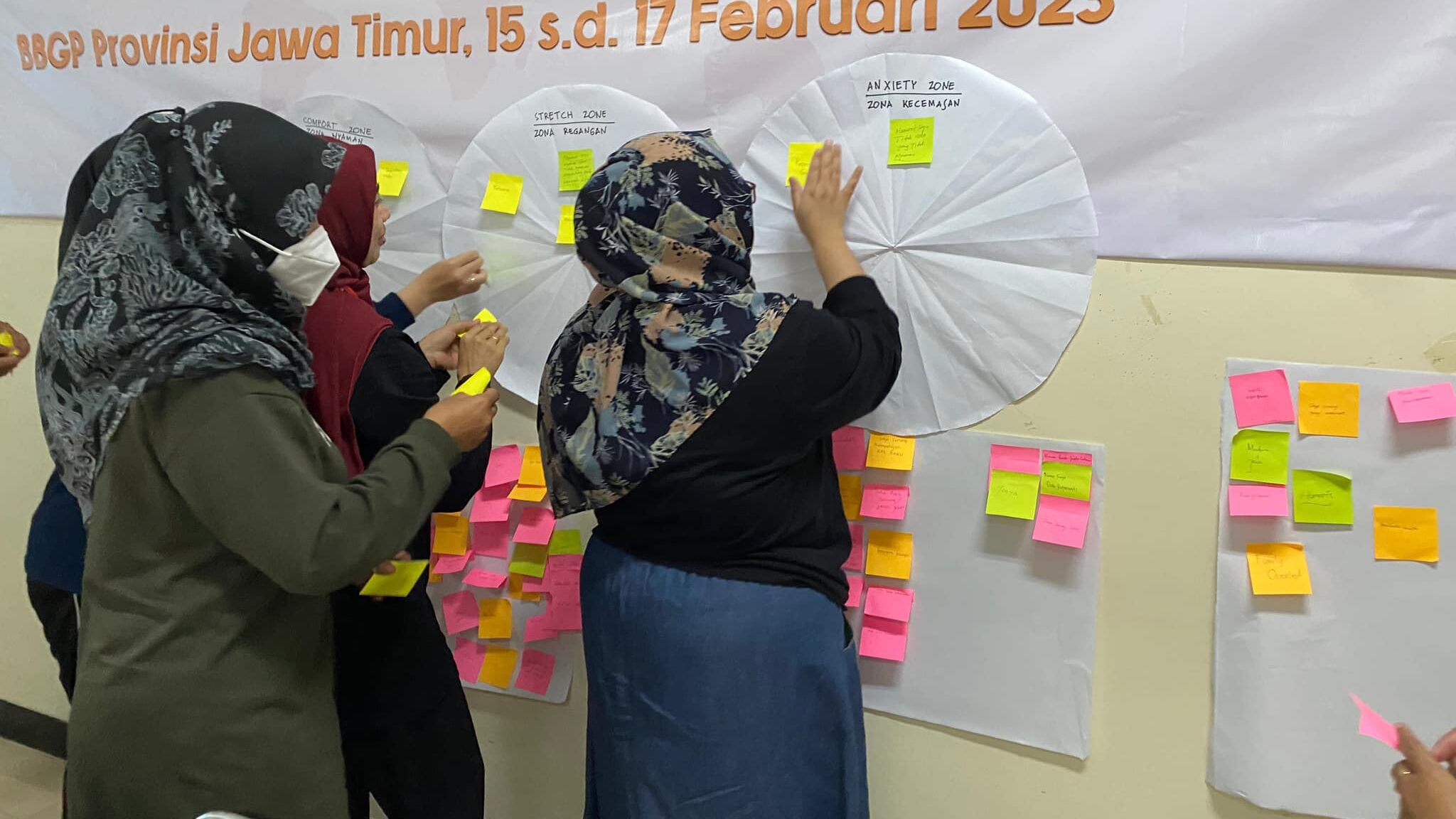
In May 2023, the second phase of the program took place with onsite workshops in five different regions: Sorong Regency, West Java, West Kalimantan, South Sukawesi, and East Java. These workshops focused on building teachers’ capacity to foster positive relationships and empower learners to create inclusive, respectful, and resilient societies. Teachers received guidance on implementing ethics education programs across various grade levels, from kindergarten to elementary, junior, and senior high school.
“For the Indonesian context, the workshop is very enriching because the experiences the teachers had is in line with their needs in the implementation of the Pancasila Students’ Profile Project. The workshop helped teachers understand more about ethics education, and more importantly, it enlightened them to make ethic education more visible and practical in their classroom,” shared Ms. Euis Lesmini Djuanda, School Principal and Fellow.
Looking Ahead
The trained teachers are now prepared to implement ethics education programs in their respective regions, positively influencing the lives of children in Indonesia. The Ethics Education Fellowship remains committed to its mission of nurturing global citizenship, building inclusive societies, and preparing students to tackle ethical challenges as active and responsible citizens.
Our gratitude goes to the fellows and all organizers who have supported the training program for teachers in Indonesia.
The post Indonesian Teachers Complete the Training Phase of the Ethics Education Fellowship Program appeared first on Ethics Education for Children.
The post Indonesian Teachers Complete the Training Phase of the Ethics Education Fellowship Program appeared first on Arigatou International.

Youth Economic Development and Peacebuilding
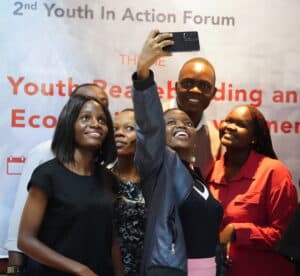
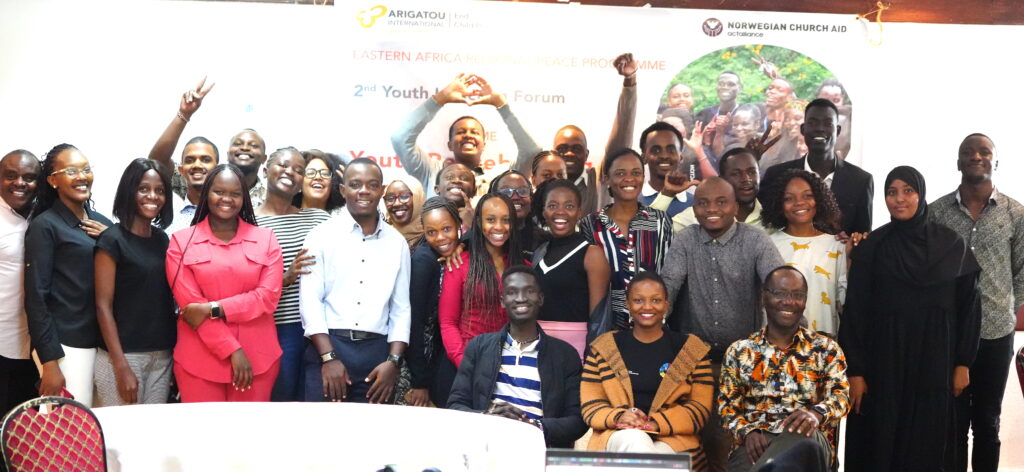
Often, youth lobby for more access to decision making positions and leadership as a step to transforming their role in conflict while neglecting deeper and more meaningful engagement on issues such as economic development and resource governance that would facilitate broader youth development and long-term peace.
It is within this premise that we conceptualized and held the 6thYouth In Action (the second forum under the new cohort) forum in Nairobi, Kenya, from 20th – 24th May 2023. The forum brought together 25 diverse young leaders from 5 countries (Ethiopia, Kenya, South Sudan, Tanzania, and Uganda) discussing the intersection between peacebuilding and youth economic development with an anchor on Freedom of Religion or Belief (FoRB).
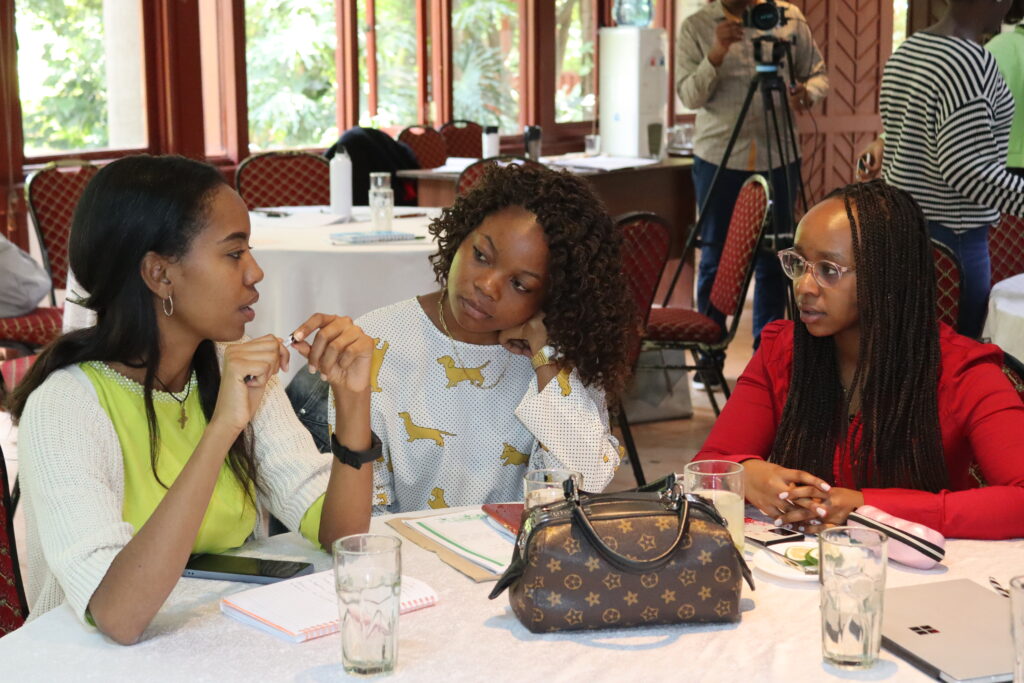
While introducing the 6th Youth In Action, Fred Nyabera, Director of Arigatou International – End Child Poverty lauded the young people for their understanding of FoRB, awareness of issues around FoRB including violation and their proactiveness on social media talking about FoRB. He challenged them to be champions of FoRB think about FoRB as an enabler for peace and a prerequisite for economic development.
“You are not here by accident; you were selected because of your influence as young leaders. You need to stretch your boundaries in thinking about FoRB” he emphasized.
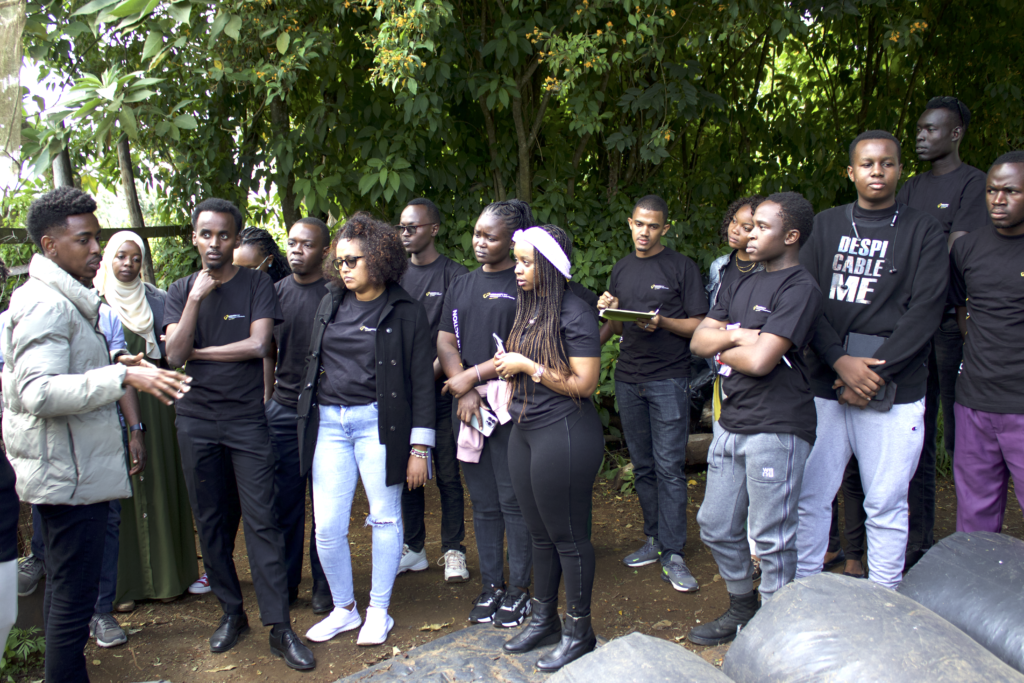
In a bid to practically learn and experience youth economic development, the 25 young people interacted with Tetu farm (a dairy farm ran by young people) and EcoBana (a youth initiative producing eco friendly sanitary pads). This was in a field visit organized by the SDGs Academy for Children, in Limuru, Kenya. Through this experience, the youth were challenged to come up with initiatives and take actions towards economic development by using technology and available resources.
“Don’t work in silos, look for strategic partnerships and use what you have to get what you don’t have” echoed Grace, one of the young people after an exciting experience with young entrepreneurs.
Lennox Omondi, young leader at EcoBana challenged his peers to be innovative even within existing spaces and products in order to find their niche; giving example of their unique sanitary pads made from banana fibers.
“You don’t always have to come up with new solutions to problems. Instead, you can work to improve on existing solutions” Lennox Omondi.
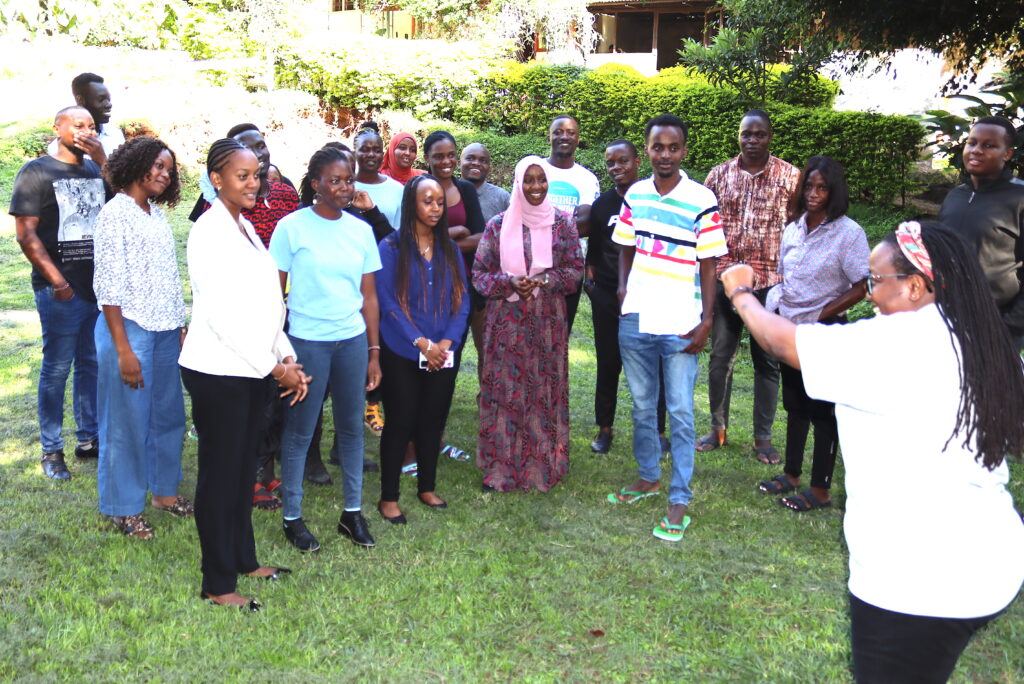
While linking this field experience to FoRB and peacebuilding, Michael Adikwu, the Sustainable Development programme lead at End Child Poverty underscored that FoRB and youth economic development related to peace, adding that for development to happen, there has tom be peace and people have to live in harmony irrespective of their religious background. Michael urged the youth to be creative and meaningfully use technology in efforts to stir up development.
“The same technology used to cause or perpetuate violence can be used for sustainability and development” he emphasized.
In her closing remarks, Maria Osula, manager of the Norwegian Church Aid Eastern Regional Peace Programme (under which Youth In Action is convened) also urged the youth to be creative and impactful in their actions towards peacebuilding.
“I have faced many challenges working on peacebuilding but what motivates me to continue each morning is hearing from different people that I have made a difference in their lives”, she gave an example of herself. The 3-day forum was undoubtedly a unique opportunity to tap into the different experiences of young people in peace building and economic development as well as inspire youth to reflect on opportunities that exist regarding increasing their sources of livelihood and diversifying conflict resolution. This way, the forum positioned itself as an exceptional platform for youth peacebuilding.
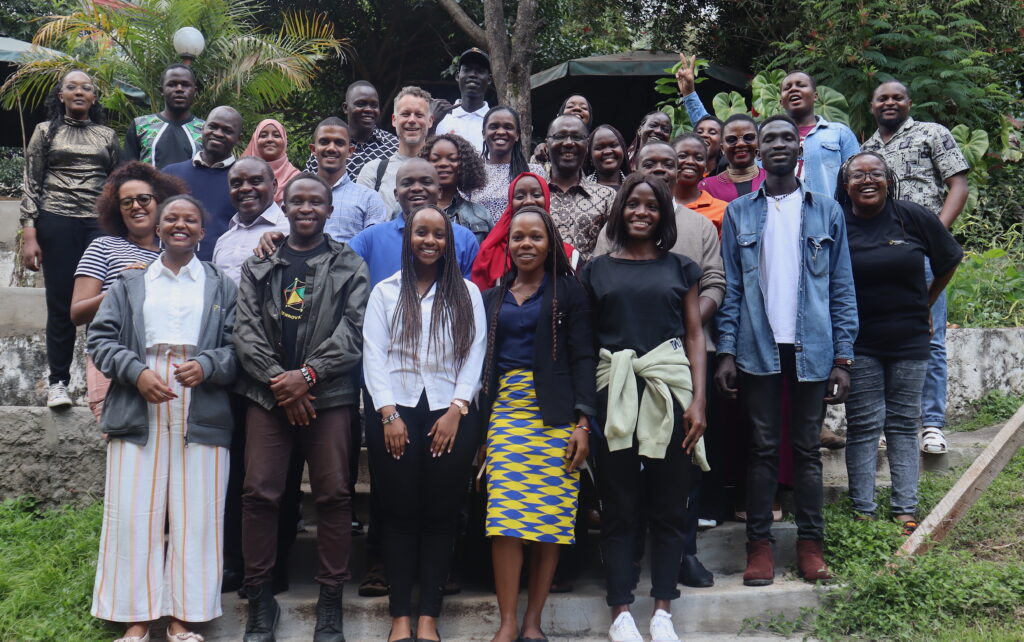
The post Youth Economic Development and Peacebuilding appeared first on End Child Poverty.
The post Youth Economic Development and Peacebuilding appeared first on Arigatou International.

Arigatou International expresses condolences for the passing of Dr. Agnes Abuom
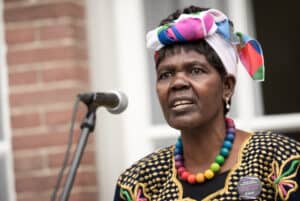
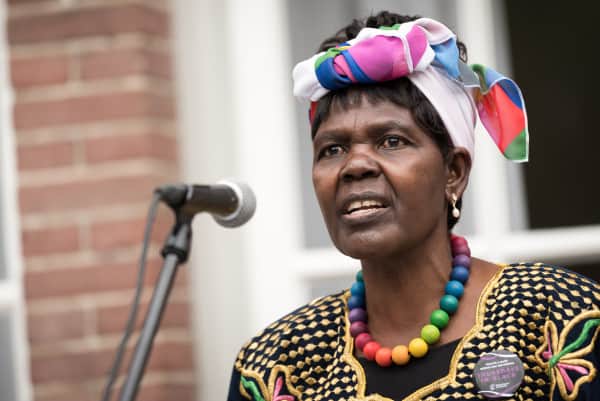
Dear Family of Dr. Agnes Abuom, the Ecumenical Fraternity and the Global Community of Faith,
We were deeply saddened to learn of the passing of Dr. Agnes Abuom, a remarkable woman whose dedication and passion have left an indelible mark on the world. We at Arigatou International, extend our heartfelt condolences to her family and the entire ecumenical community during this time of profound loss.
Dr. Abuom’s contributions to Arigatou International, as a member of our Advisory Board, were invaluable. Her exceptional leadership and unwavering commitment to the pursuit of justice and peace were genuinely inspiring. Her presence and guidance will be deeply missed as we continue our mission to foster a world where the rights and well-being of every child are upheld.
Throughout her distinguished career, Dr. Abuom exhibited extraordinary leadership, serving as the Moderator of the World Council of Churches Central Committee, among many other important roles in various ecumenical bodies and the Anglican Church. She was a beacon of wisdom, clarity, diplomacy, courage, humility, and righteousness. Her profound impact reached far beyond her local community, influencing interfaith spaces globally and shining a light on the African faith community.
Dr. Abuom’s passion for justice and her tireless efforts to promote unity and understanding among different religious traditions were a blessing to humanity. She was a true advocate for the marginalized and a symbol of hope for those who yearned for a more just and inclusive world. Her legacy will continue to inspire generations to come.
During this difficult time, know that our thoughts and prayers are with Dr. Abuom’s family and the global community of faith. May you find solace in the memories you shared and in the knowledge that her profound impact on the world will forever remain.
With deepest sympathies,
Arigatou International
The post Arigatou International expresses condolences for the passing of Dr. Agnes Abuom appeared first on Arigatou International.

What is Entertaiment?

Entertaiment refers to a broad range of activities designed for the enjoyment and amusement of an individual or group, or to provide an aesthetic effect. It can be as simple as watching a film for entertainment; or as complex as organising a banquet or performance for a thousand people. It may also include participation in games or sports for the enjoyment of others and may involve social interaction or learning. As with other forms of cultural expression, entertainment has evolved over time and has demonstrated a remarkable ability to cross over different media. This has helped to ensure the longevity of many familiar themes and images.
The post What is Entertaiment? appeared first on www.snvla.org.

Automobiles – A Brief History

Automobiles are one of the most important inventions of modern times. They have revolutionized the way people live, work, and play. Many different kinds of automobiles exist, ranging from two-wheeled scooters and motorcycles to four-wheeled cars and trucks. Some are designed for racing, while others are built to carry cargo or passengers.
The modern automobile is made up of thousands of individual parts. These parts are arranged into several semi-independent systems that function like the human body’s organs. These systems include the chassis, which supports all the other mechanical components, and the body, which provides safety, comfort, and protection from the elements for the car’s passengers. The engine—the heart of the automobile—is powered by fuel, which is ignited by an electric starter motor to provide energy for driving the wheels. The engine also requires circulatory systems for lubricating oil and cooling water. The electrical system, which controls many of the automobile’s sensors and computers, uses electricity from a battery or alternator.
Most modern automobiles are powered by gasoline, but they can be powered by other fuels, including diesel and natural gas. Some are hybrids, which combine an internal combustion engine with an electric motor to reduce emissions and increase efficiency.
In the early twentieth century, the automobile became a symbol of American freedom and independence. The ability to drive a car opened up new job possibilities and allowed people to move across the country in search of better living conditions. The automobile also helped people to maintain long-distance friendships and families and to keep in touch with business associates.
Throughout the years, automobile engineers and designers have developed new technical features to improve the car’s performance and safety. They have also worked to make it easier and more cost-effective for people to own and operate these powerful machines. Mass production techniques, which were first developed for the manufacture of automobiles, have been applied to many other manufacturing industries and have helped to bring the price of most consumer goods down.
In addition, the automobile has become an important tool for social activism and protests. For example, in 1916, Nell Richardson and Alice Burke drove across the United States to advocate for women’s rights to vote. They decorated their vehicle with the message “votes for women.”
If you are interested in buying an automobile, you should look at the advantages and disadvantages of owning one. One of the biggest benefits is that it gives you freedom to travel wherever you want when you want. You don’t have to rely on public transport schedules or worry about making it to the bus stop on time. Another benefit is that it allows you to do many things on the road, such as visit friends or go shopping.
The post Automobiles – A Brief History appeared first on www.snvla.org.






